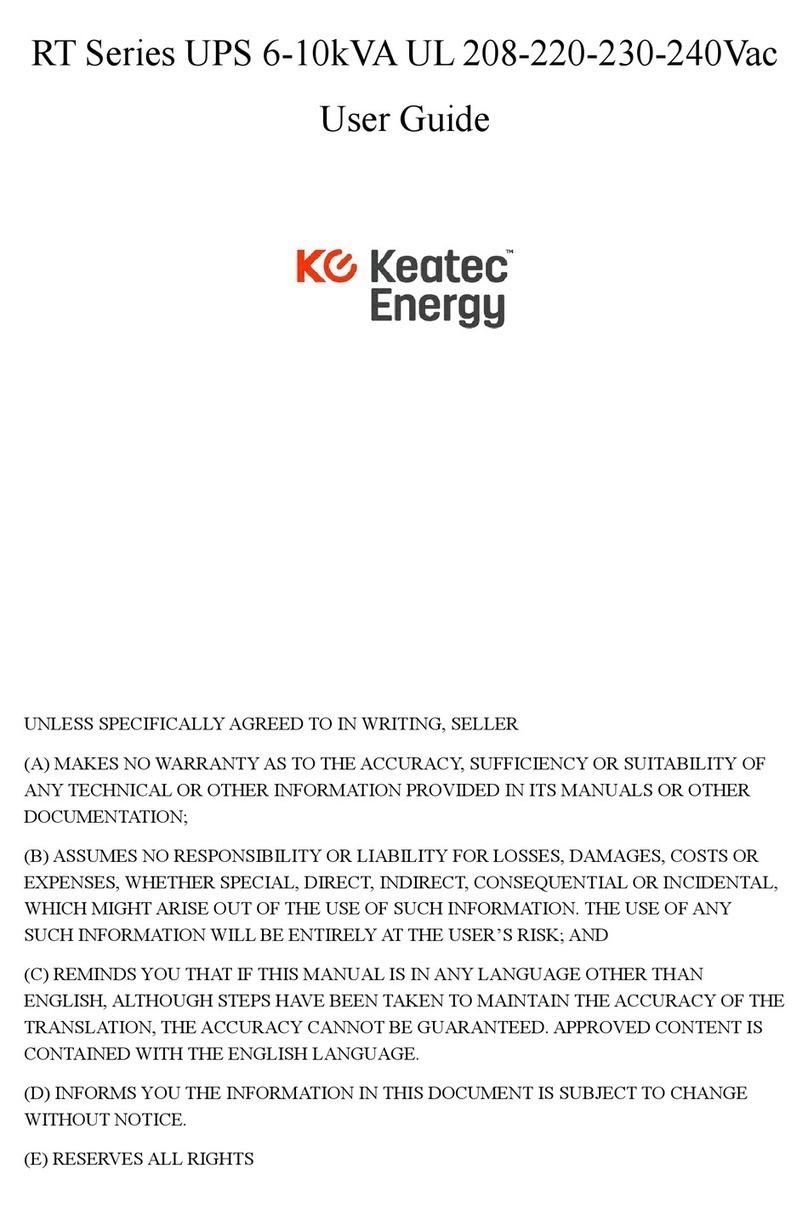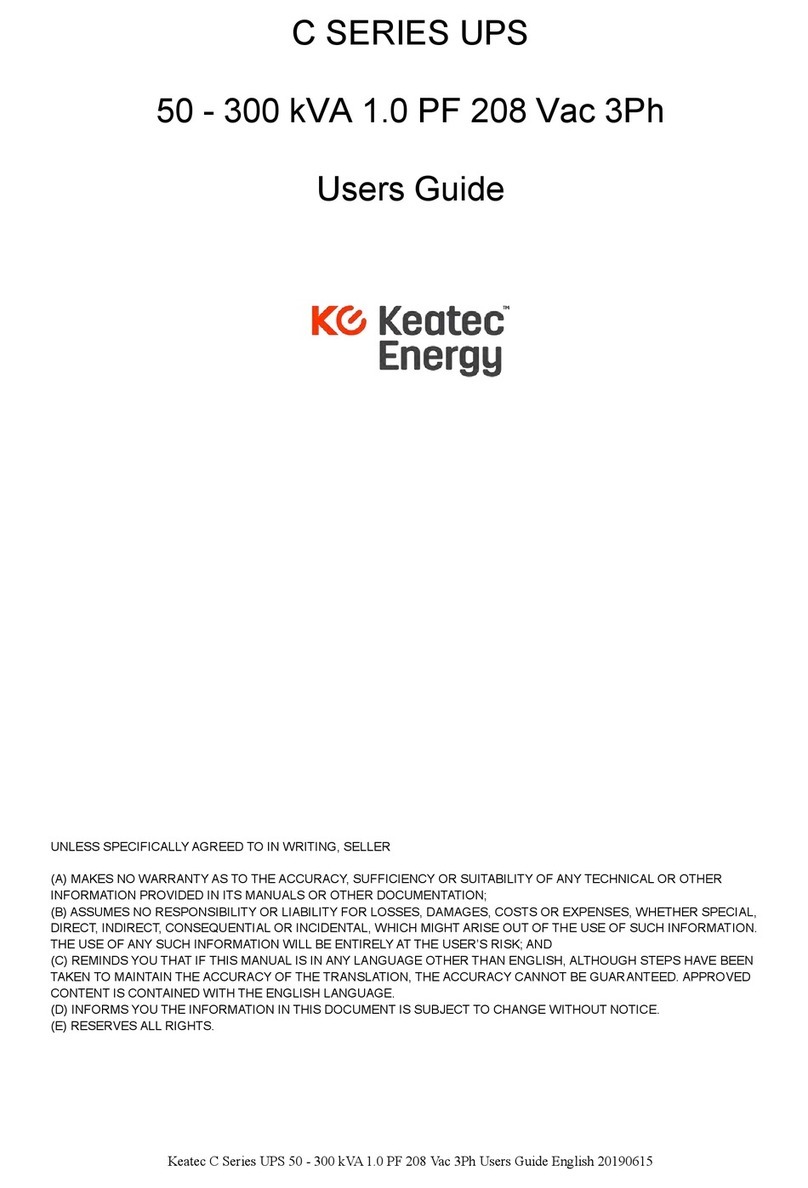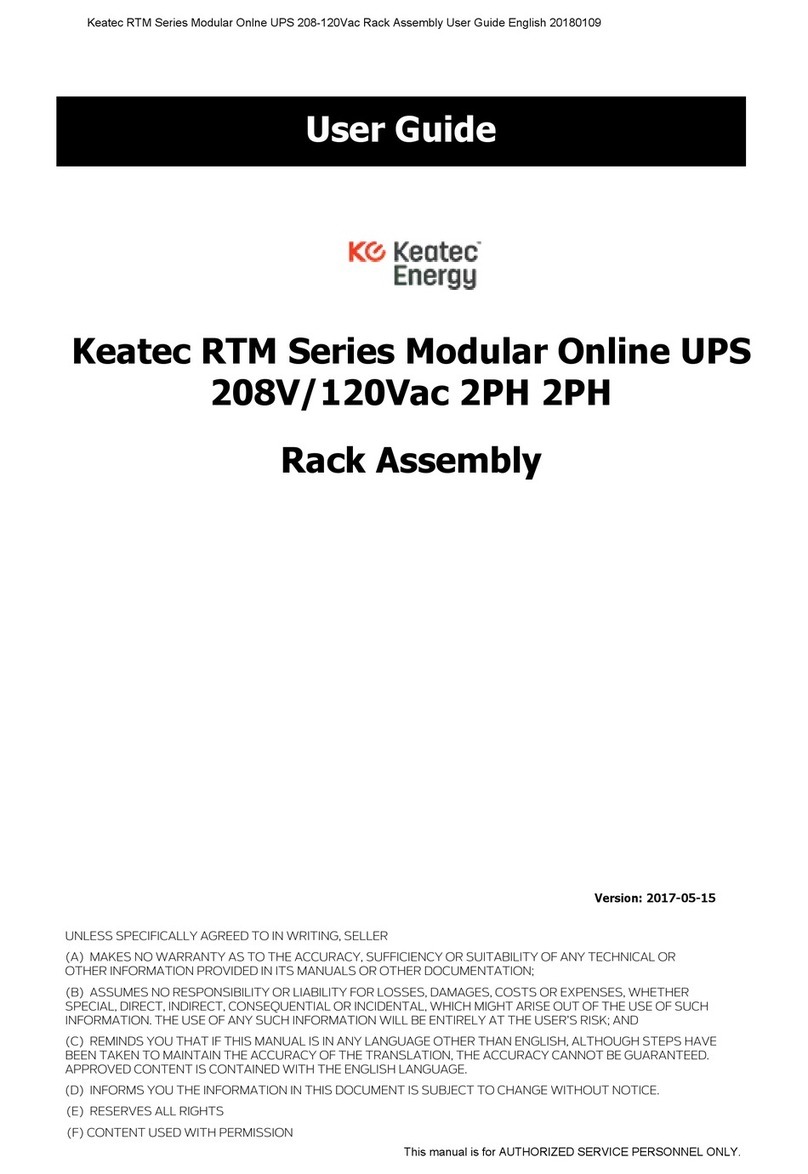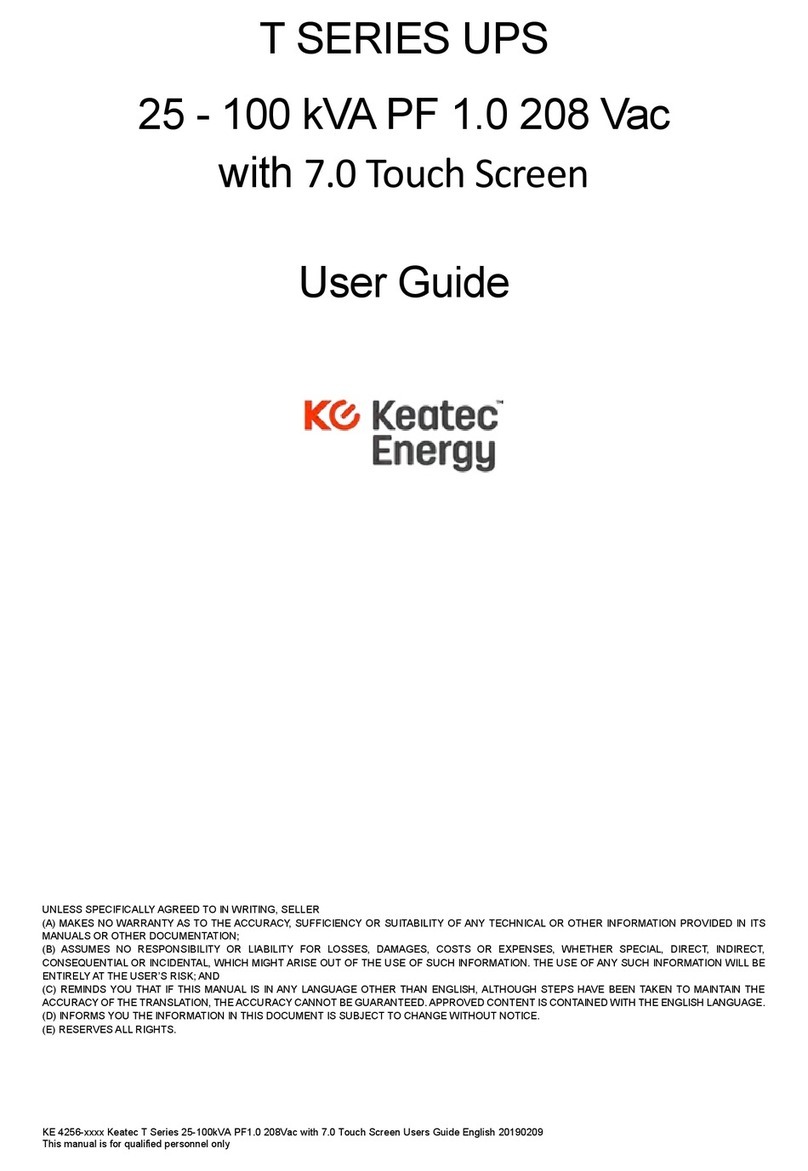KE 4256-3230 Keatec T Series UPS 10-40K 380Vac Users Guide English 20170126 This manual is for qualified personnel only.
Page 3
2.Main Features
2.1 Summary
This series UPS is a three-in-three-out high frequency online UPS. The UPS helps avoid power
supply problems, such as blackout, over-voltage, under-voltage, sudden voltage drop, high
voltage pulse, voltage fluctuation, surge, inrush current, harmonic distortion (THD), noise
interference, frequency fluctuation, etc.
This UPS can be applied to different applications including computer device, automatic
equipment, communication system and industry equipment.
2.2 Functions and Features
3Phase In/3Phase Out UPS
It is 3Phase In/3Phase Out high-density UPS system.
Digital Control
This series UPS is controlled by Digital Signal Processor (DSP) which enhances and increases
reliability, performance, self-protection, self-diagnostics and so on.
Flexible Battery Input Configurable
10 - 30kVA: the battery for this series UPS can be configured using 16, 18 or 20 12V batteries.
40kVA: the battery for this series UPS can be configured using 32, 34, 36, 38 or 40 12V
batteries.
Charging Current is configurable
Using the PC Software, the user may set the capacity of the batteries as well as the maximum
charging current. Constant voltage mode, constant current mode or floating mode can be
switched automatically and smoothly.
Intelligent Charging
Advanced three-stage charging
1st stage: High constant current charging to 90%
2nd stage: Constant voltage to finish charging
3rd stage: Float replaces battery self-discharge
The 3-stage charging extends the life of the batteries and recharges batteries quickly.
LCD Display
With LCD and LED display its quick and easy to determine UPS status and operational
parameters, such as input/output voltage, frequency & load%, battery% and ambient
temperature, etc.
Intelligent Monitoring
An optional SNMP card can be used to remotely control and monitor the UPS.
Emergency Power Off Function
The UPS may be completely shut off when the EPO button is pressed. Remote EPO (REPO)
function is also available.


































